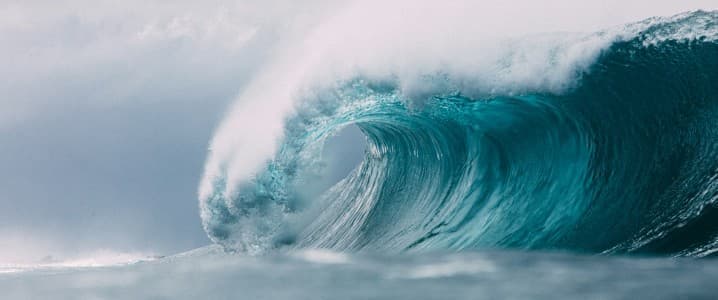AI Powers a New Wave in Tidal Energy Development
As our global energy needs continue to soar higher, catalyzed by sweeping integration of artificial intelligence models, more and more investors are taking an all-of-the-above approach to energy generation. AI’s growing energy needs are leading to increased natural gas and coal production and delayed closures of fossil fuel plants. But, on the other hand, the tech sector’s ballooning energy footprint is also incentivizing a new wave of research and development into niche and nascent forms of clean energy production like enhanced geothermal technologies, nuclear fusion, and tidal energy.
Sources like geothermal and tidal energy hold great potential for reliably and cleanly powering AI because they provide a constant stream of energy, unlike solar and wind, which wax and wane according to climatic factors. For this reason, proponents of tidal energy (also known as wave energy) think that the sector is finally about to take off in a big way.
“Wave energy is the most stable and the least intermittent source of renewable energy. In suitable locations, it can actually produce 24/7,” says Inna Braverman, founder and CEO of a Stockholm-based tidal energy startup called Eco Wave. “It can be a stabilizing factor for solar and for wind because solar is great, but you have the night, you have cloud coverage and you don’t produce anything. The wind blows for a few hours, but when the wind finishes blowing, the turbine doesn’t work anymore.”
Eco Wave has just kicked off the very first wave-based electric power project in the United States. The floating platform is gathering energy in the Port of Los Angeles, where the water’s natural movements push floating platforms up and down. The movement of the platforms pump a hydraulic cylinder, which in turn spins a turbine to generate clean electricity.
According to a report by Forbes, Braverman has ambitious goals for expanding on the pilot project, which includes a plan to “eventually construct a 60-megawatt commercial-scale version along an 8-mile breakwater in the harbor that could supply enough electricity to power 60,000 homes.” The LA pilot project is just one of a growing number of wave-energy models around the world, including in Taiwan, Australia, and Portugal.
“With such vast potential, wave energy could play a huge role in powering the AI boom,” Forbes reported earlier this year. “Constructing [data centers] near coastal areas would allow them to tap directly into the ocean’s abundant clean energy, creating an efficient solution for growing demand.”



Leave a Comment
Your email address will not be published. Required fields are marked *